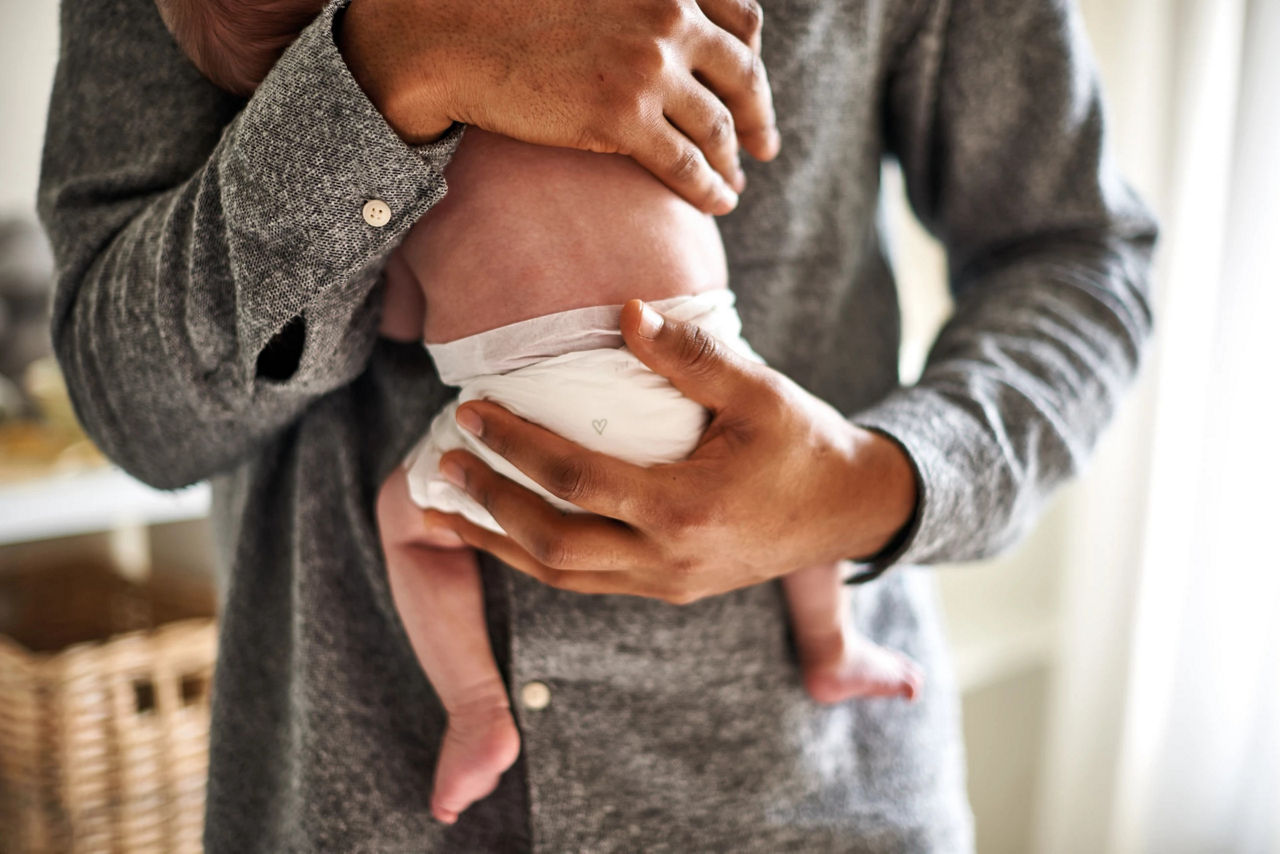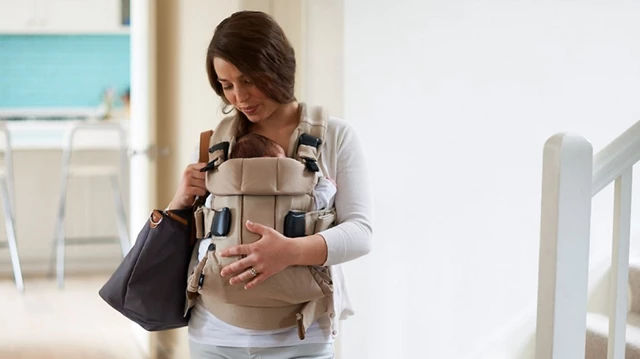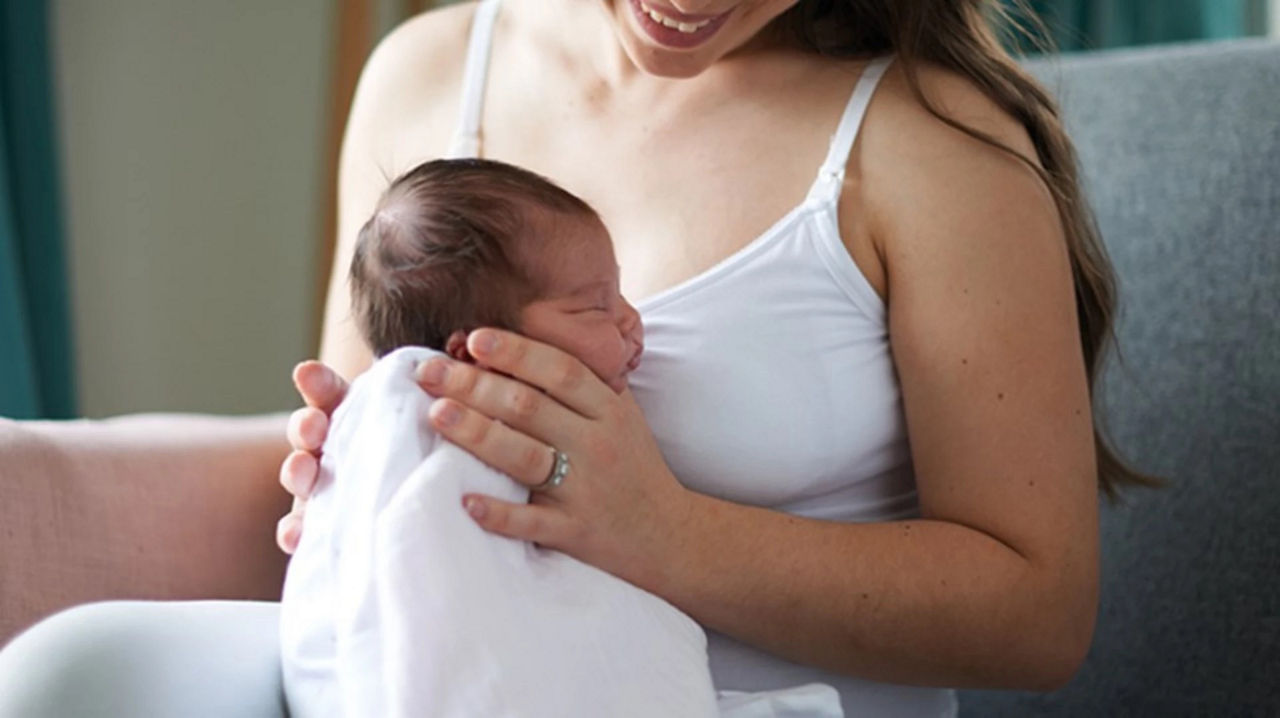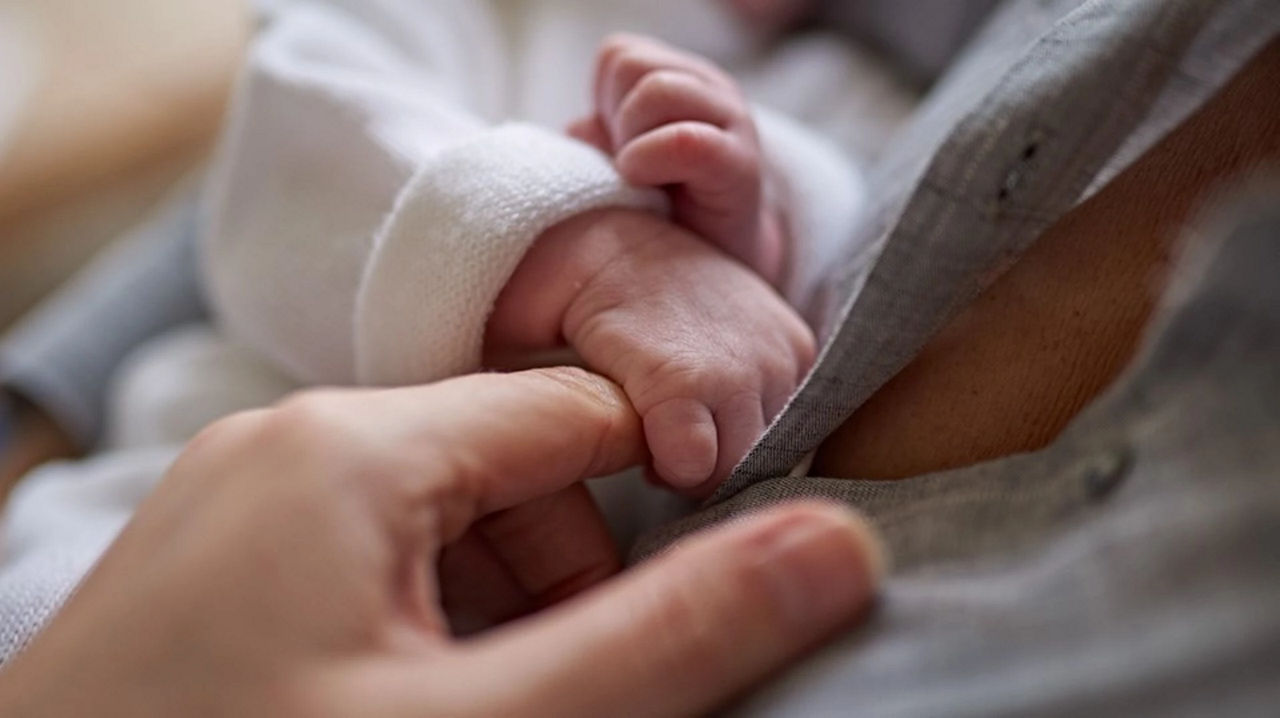Although it’s easy to get carried away with all those cute baby clothes, dressing a newborn is about practicality rather than style. Simple babygrows with stretchy ‘envelope’ necks are easiest to get on and off a wriggling baby. This is our guide to the essentials.
Dressing your newborn
Summary
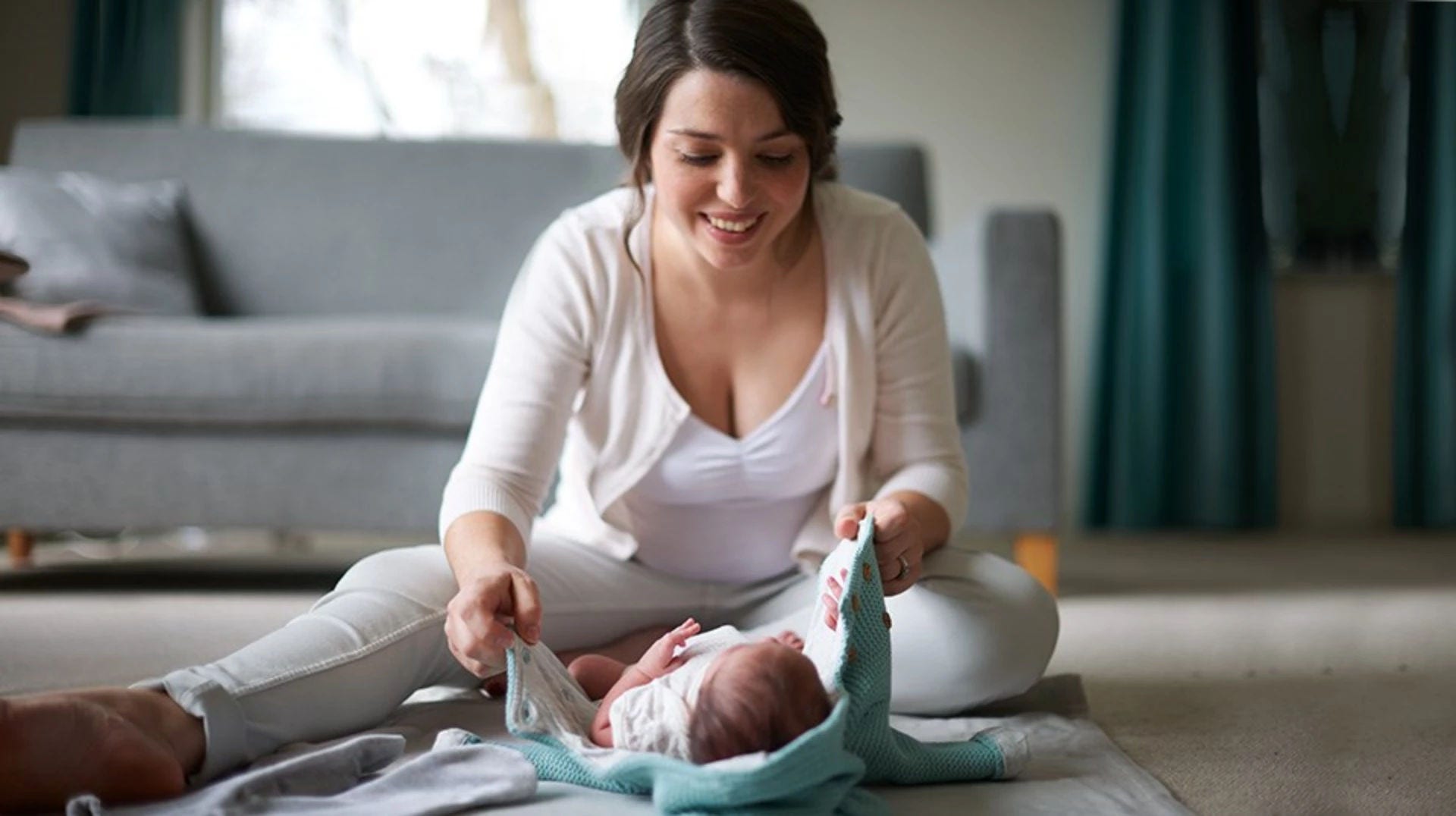
Clothes shopping for a new arrival
Judging clothing sizes for babies before they’re born is surprisingly tricky. The average newborn weighs around 7.7lb, but babies come in all shapes, sizes and lengths. Added to that, manufacturer’s sizing can vary quite considerably. Try not to get carried away with buying too much until after they are born, especially with smaller clothes. At least with the bigger sizes, you know they’ll grow into them, and probably quite quickly too.
The capsule wardrobe
This is our list of core essentials to get you through the first couple of weeks. Bear in mind that your baby may need several changes of outfit a day, so think about how much washing you’re prepared to do. You also need to consider the time of year and the weather.
You'll need:
- Five or more sleeveless or short-sleeved bodysuits, to act as underlayers. These are usually fastened with poppers at the bottom and don’t cover the legs.
- Five or more babygrows. These handy outfits sit on top of a bodysuit and often have built-in scratch mitts. Look for ones with ‘envelope’ necks, as these are easy to get over your baby’s head and can even be pulled off downwards if dirty.
- One or two hats to prevent your baby losing heat when you go outside.
- One or two cardigans to layer up if the temperature drops.
- In winter: a padded coat or snowsuit to keep them warm and comfortable on trips out of the house.
- Two to three blankets. One of these should be aerated (usually crochet or knitted), to allow a flow of air when sleeping.
- Scratch mitts or socks to stop them scratching themselves.
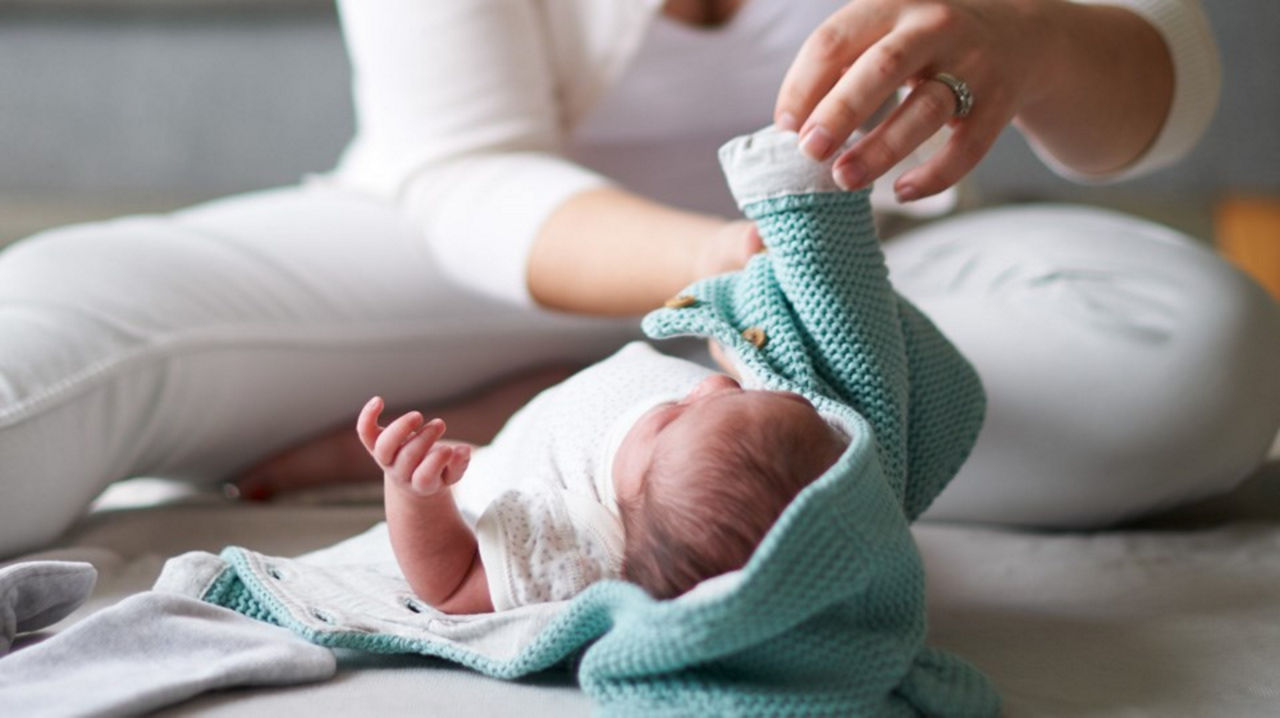
Fabrics
Your baby’s clothes need to be soft to protect their delicate skin. Avoid using harsh detergents, and wash clothes before they are worn for the first time. Natural fabrics, like cotton, tend to be more breathable and help prevent irritation, overheating and rashes.
Temperature control
Babies aren’t very good at controlling their temperature and can overheat or get cold very quickly. If your baby gets too hot, they will usually let you know by crying, but if they are too cold, they may go quiet to preserve their energy. You can check if they are warm enough by touching their chest. Their hands and feet may often feel a little chilly, but it’s nothing to worry about. A good rule of thumb for dressing your baby is to add an extra layer to what you are comfortably wearing.
Next steps
- When buying clothes before your baby is born, choose a variety of sizes; just check when buying that you can return what you don’t use, and keep all the receipts and packaging.
- Ask friends or family to buy larger clothes for your baby to grow into, or gift vouchers. You don’t want to end up with lots of tiny clothes that you don’t use.
- Remember that there’ll be plenty of opportunities to shop after your baby is born.
Related articles

Get in touch with our Careline experts
Our nutritionists and feeding advisors are always on hand to talk about feeding your baby. So if you have a question, just get in touch


